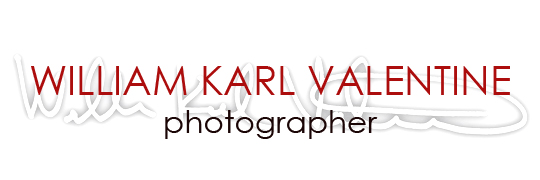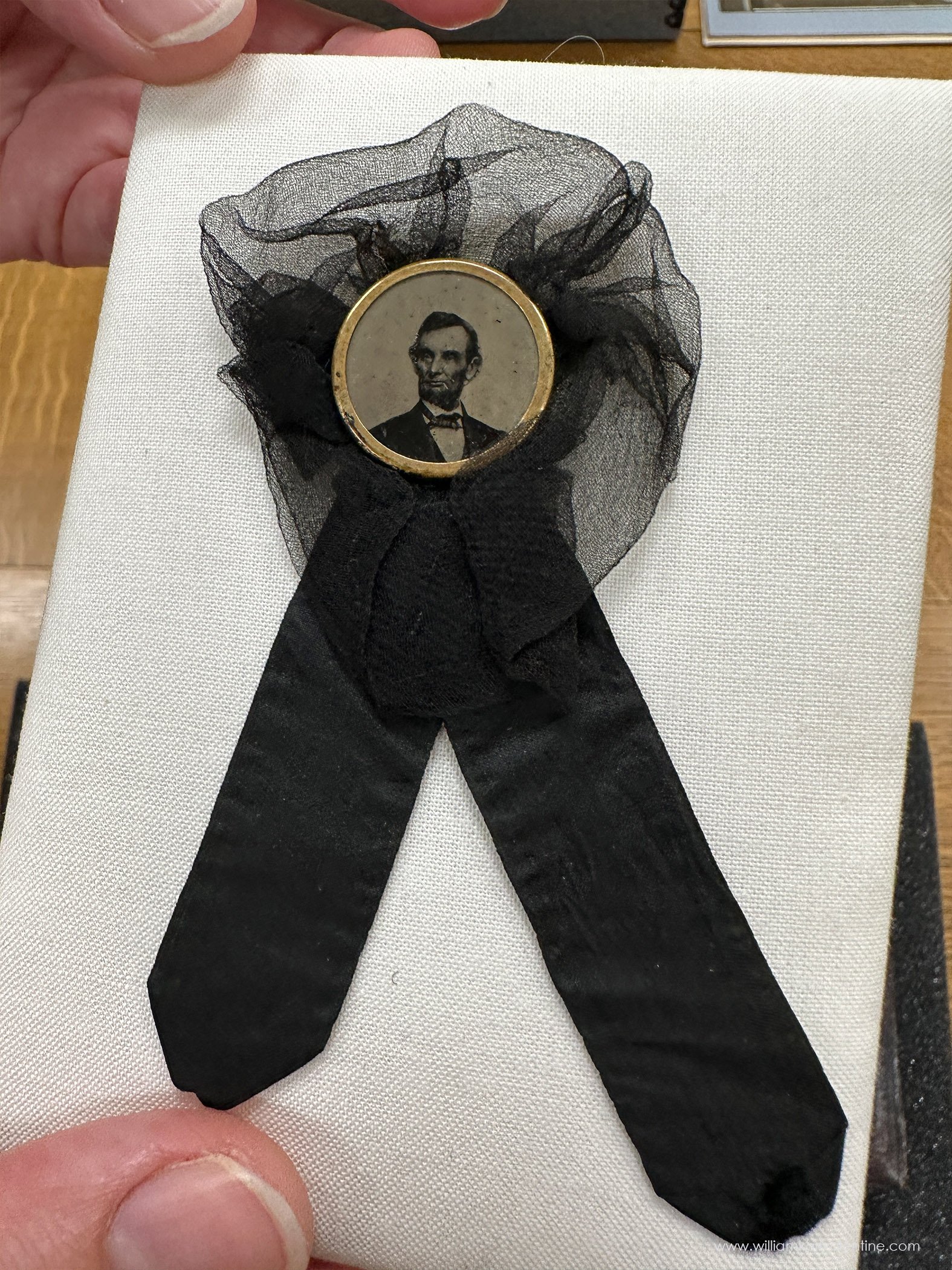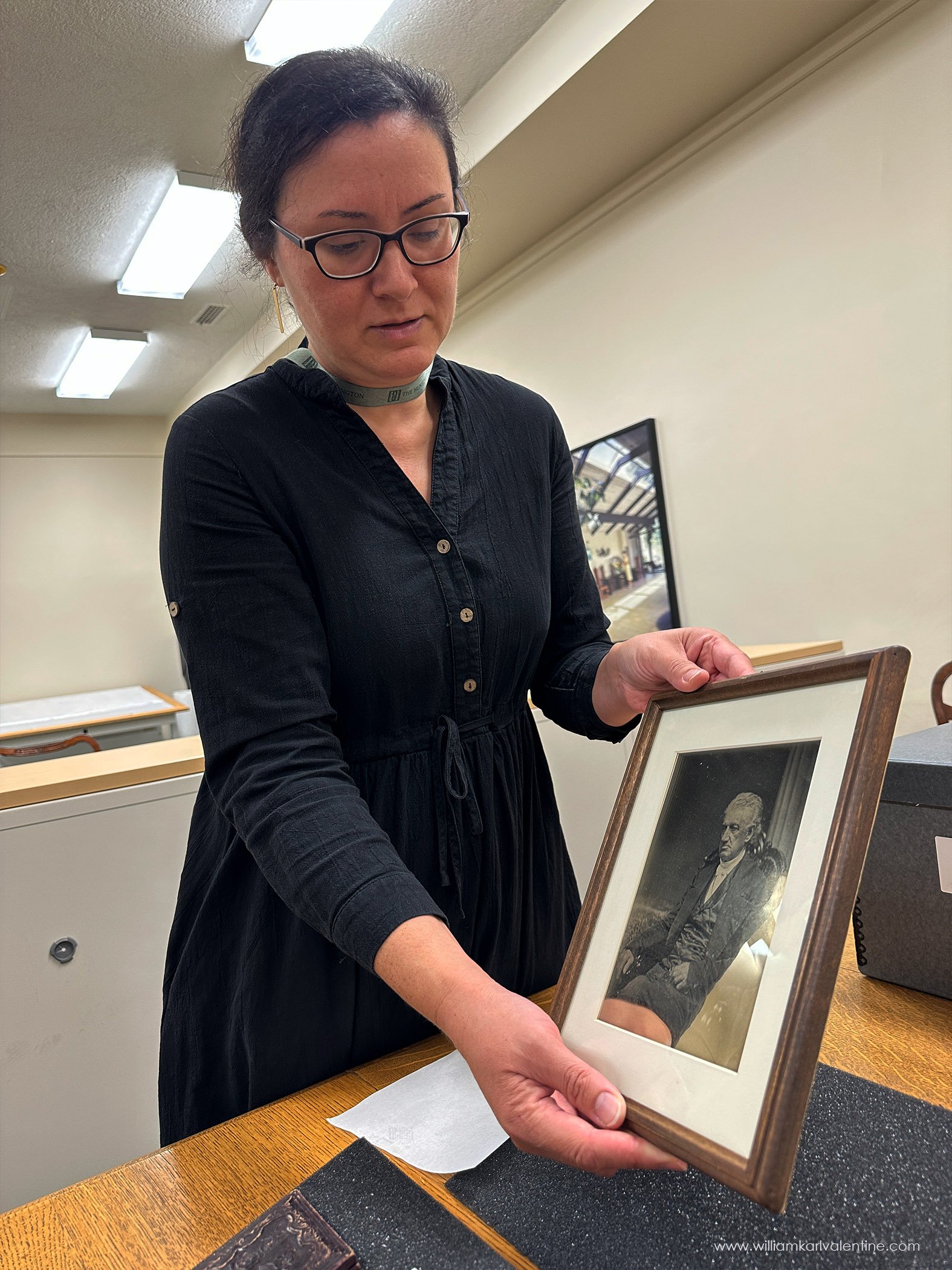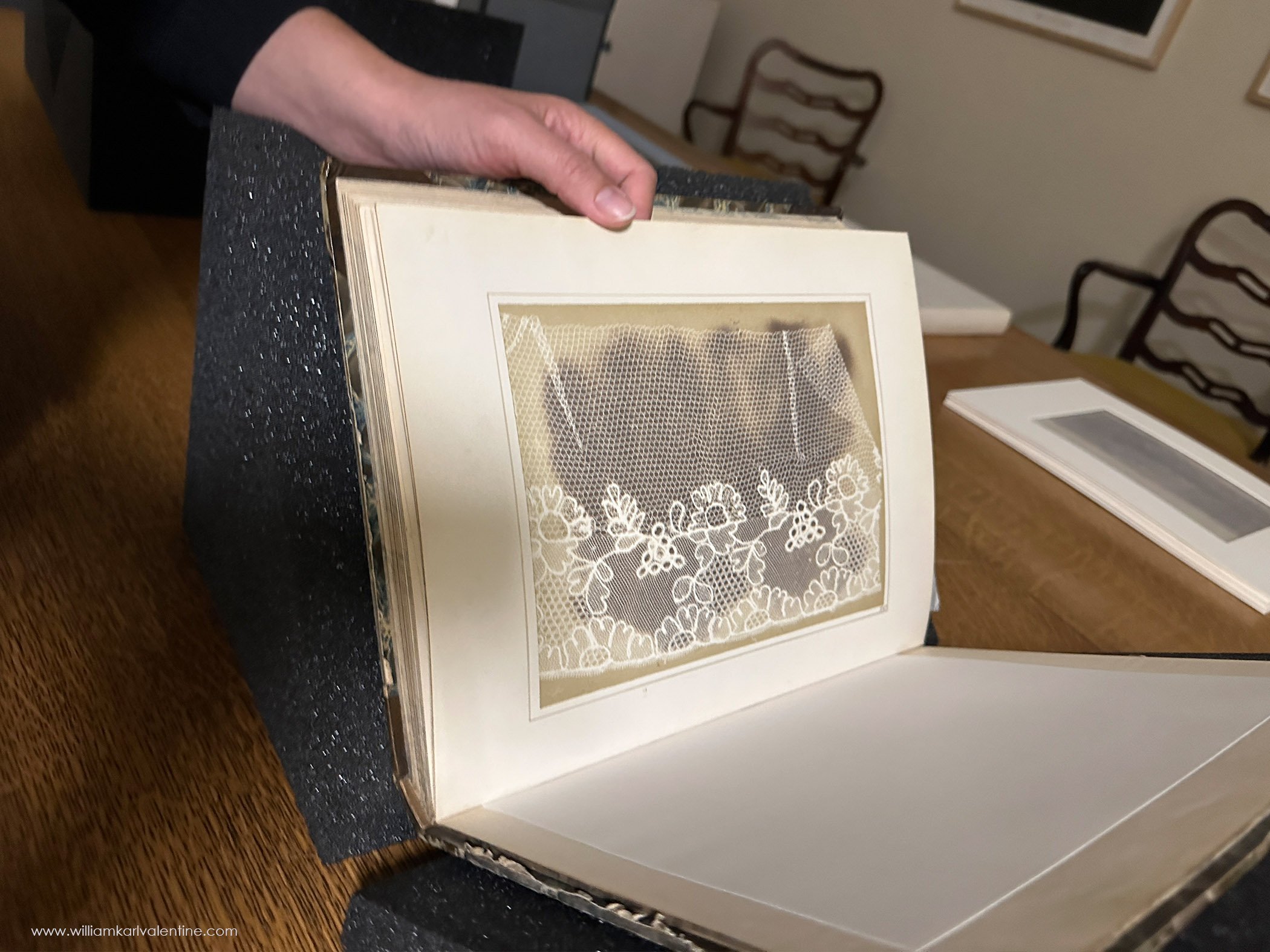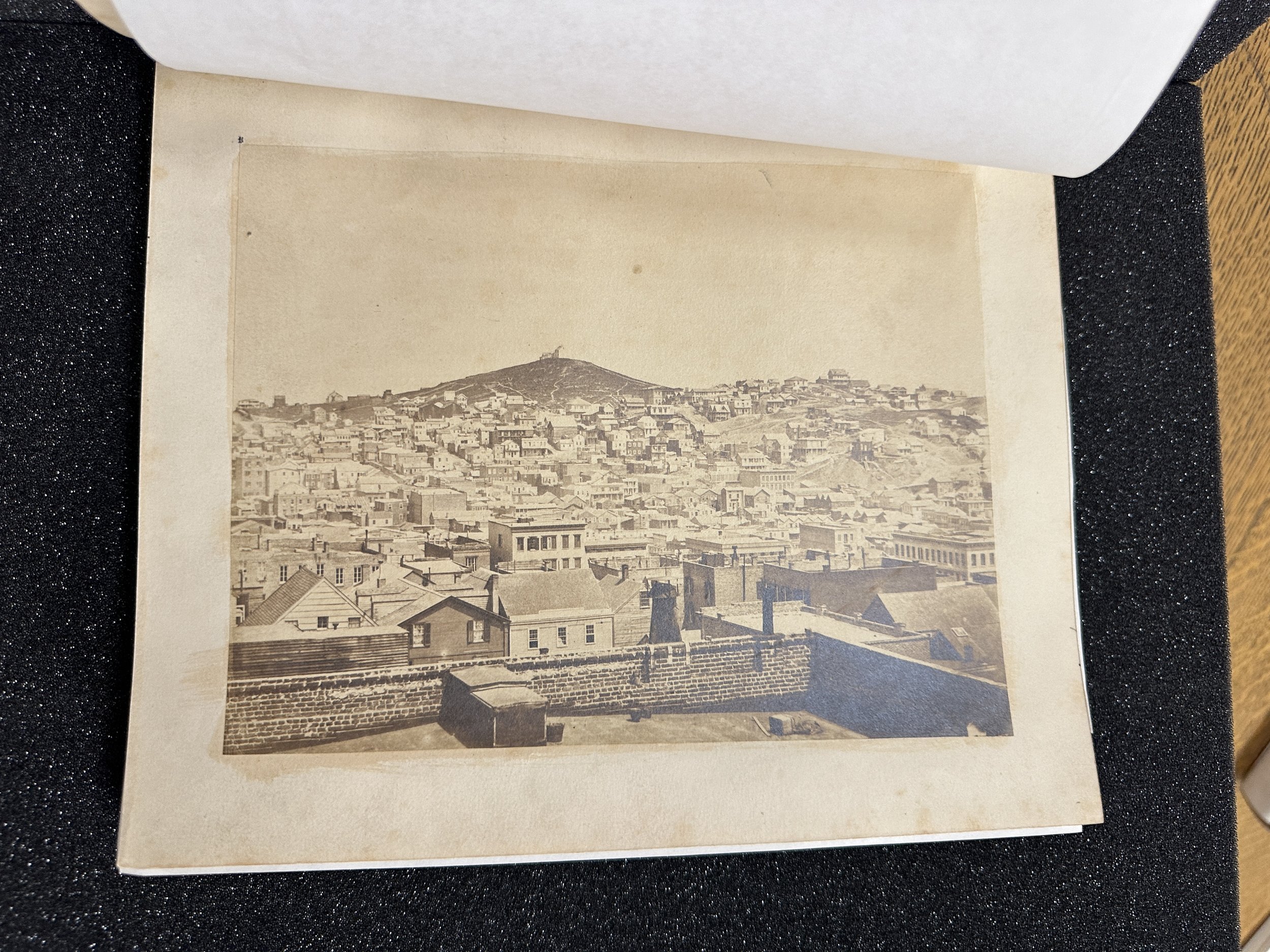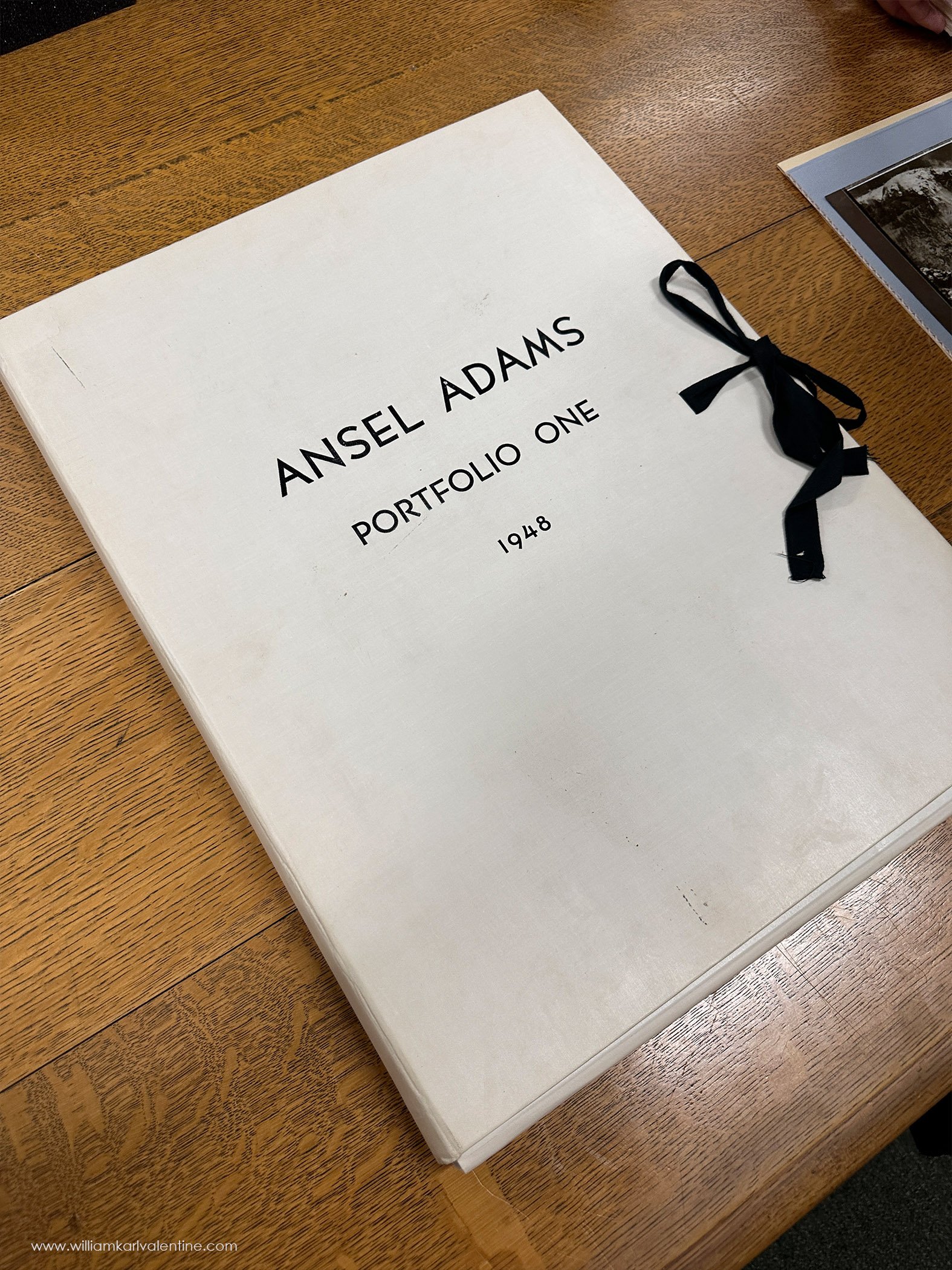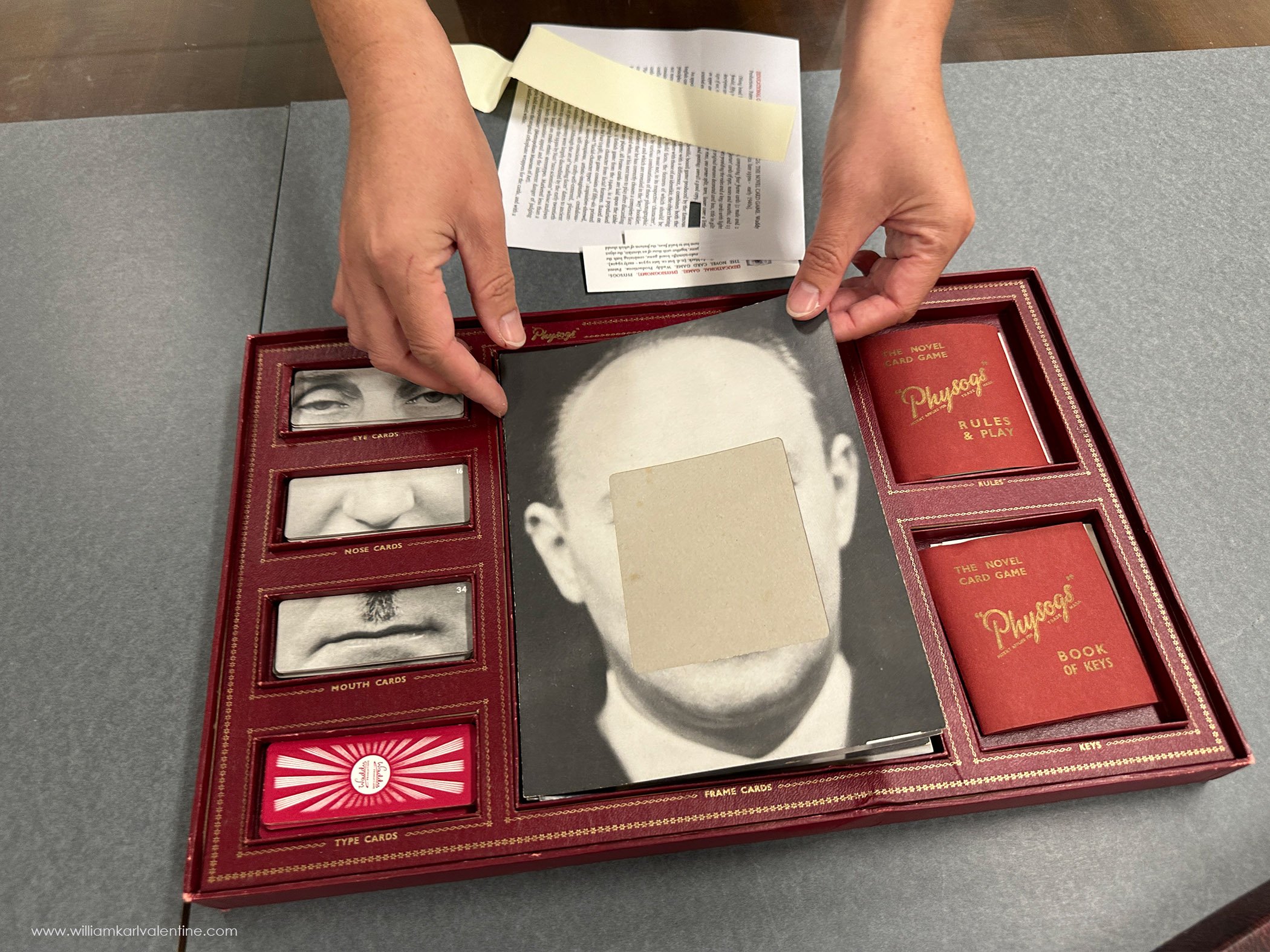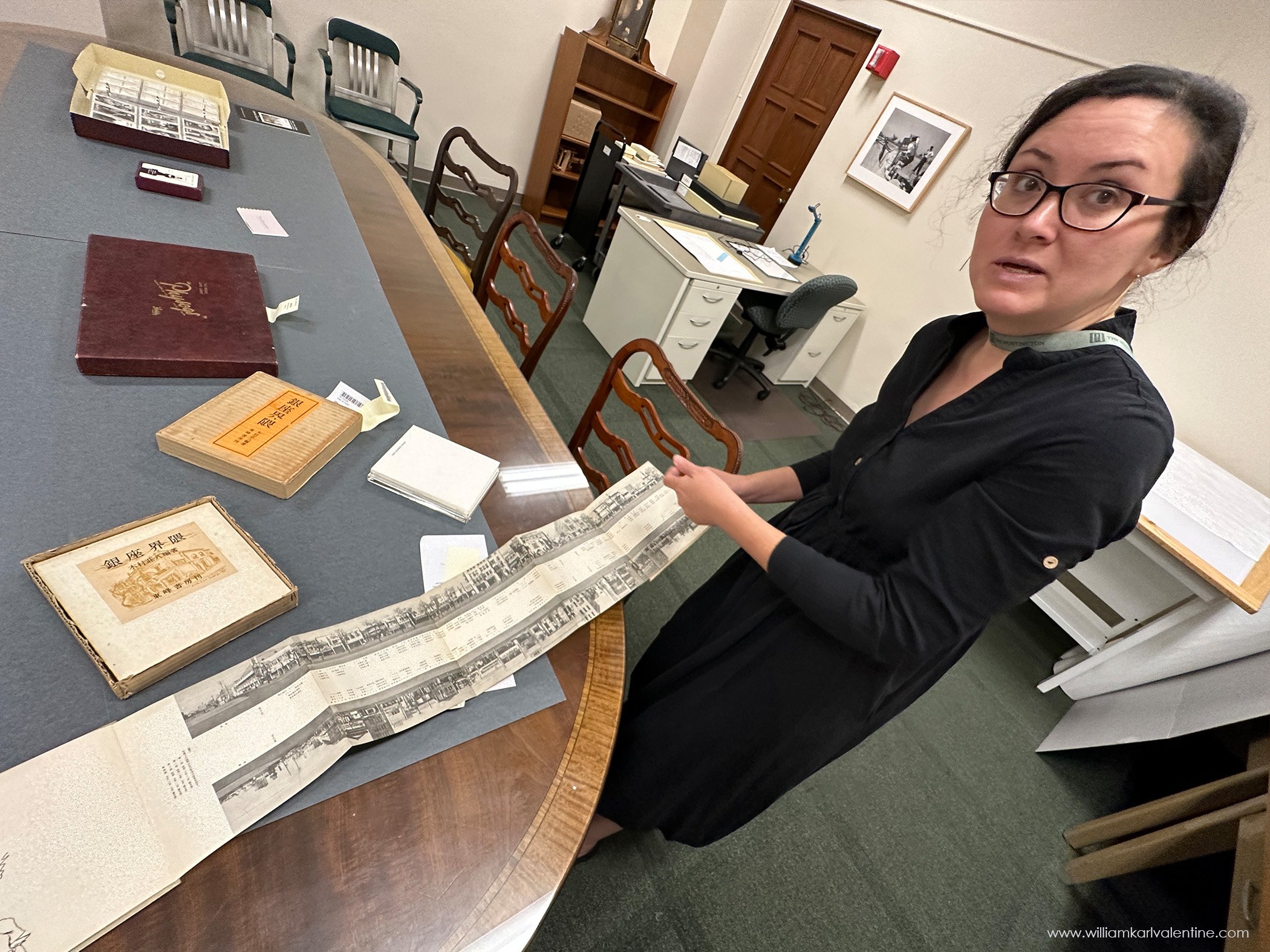On September 22nd, I had the amazing opportunity to meet with The Huntington Library’s Curator of Photographs, Linde Lehtinen, and explore a fraction of their Photography Collection. The Huntington has an incredible collection with over one million photographs, as well as photographic artifacts. Being born and raised in Pasadena I know the Huntington Library fairly well. I have walked the gardens numerous times, seen their famous paintings “Pinky” and “Blue Bloy”, smelled a Corpse Flower in bloom before, and I have seen a few photography exhibitions there. In fact, probably the best photography exhibition documenting Los Angeles that I have ever seen was the Huntington’s 2008 exhibition “This Side of Paradise - Body and Landscape in Los Angeles Photographs”. That show and accompanying catalogue were curated by former Huntington Curator of Photographs Jennifer A. Watts, independent curator Claudia Bohn-Spector, and Brown University Professor Douglas R. Nickel. But this was the first time I have ever had the opportunity to get an inside glimpse in to their amazing photography collection.
I was able to obtain this experience through the Los Angeles Center of Photography and one of their charity auctions. I am so thankful for the wonderful things that LACP does and I was happy to support them with my bid. I used my iPhone camera as my note taker for the event so this blog post is going to be more photos than words, which is always best with my posts. I will post gallery blocks for most items I saw. Linde chose the items to share based on our correspondence before the visit, selecting things I was interested in as well as unique pieces she was interested in seeing. In some cases, this was her first opportunity to really spend time with an item in the collection since the collection is so massive and the fact, she recently assumed her position.
Linde started off with the above Daguerreotypes. The first was a Daguerreotype made by photographing another Daguerreotype which was highly unusual but it created a richer image and allowed for reproducing an image. The second was on a mourning ribbon for Lincoln. I loved how this artifact was both a photograph and a piece of American History. The third was the largest Daguerreotype I have ever seen and when Linde tilted it the image was so rich. The link in this paragraph is to the Library of Congress’s definition and is very informative.
Preparing for my visit I researched the Huntington’s collection online and saw these two books and asked to see them. The red cover book was published in 1856, titled Photographs of the Most Beautiful Views and Public Buildings of San Francisco, G.R. Fardon's San Francisco Album is the earliest existing photographic record of an American city and one of the earliest of any city in the world. The dark cover book is William Henry Fox Talbot's Pencil of Nature, produced between 1844 and 1846. The Pencil of Nature was the first commercially published book illustrated with photographs. It contained twenty-four plates, a brief text for each, and text about Talbot’s invention of Photography, specifically the history and the chemical process. There are believed to only be 40 copies of this book that still exist today. As most readers of this blog will know, Talbot has been credited with discovering the photographic process in 1833, and with making the first negative in 1834. Most readers will also know that Nicéphore Niépce and Louis-Jacques-Mandé Daguerre were working on discovering a photographic process with a Camera Obcsura in France during the 1820’s and that Dauguerre had perfected the Daguerreotype process by 1839 when he announced publicly. Most scholars I believe agree the processes were discovered concurrently. It was an intense feeling to be in the presence of these two books because I realized they were connecting me back to the beginning of a medium which is such an important part of my life. When we were looking at the Pencil of Nature, I knew that book had been produced just a decade after Talbot’s discovery of photography. In reading the pages of the book, seeing Talbot’s comments about the history and detail of his photographic process I felt like I had gone back in time and was listening to him telling me this story directly. The printing press / typeset work was beautiful, and I assume he supervised the printing of all photographs placed in the book. It was a truly powerful experience, and these books are so delicate now we had to view them in subdued lighting. Fardon’s book had images in better condition being produced another ten years later. What I loved about seeing Fardon’s book was it is a photographic record of something, it was a documentary project, the first book using photographs to accomplish that. Talbo't’s book was a history and resource guide about the medium. Fardon’s book could probably be considered the father of most all photography books. It is a wonderful documentation of San Francisco in the 1850’s.
Ansel Adams - Print from Portfolio One
I have seen lots of Ansel Adams prints in my travels, they have taught me so much about what a good print should look like, but I had never seen a copy of his Portfolio One in person before. Reading the portfolio’s accompanying documentation and seeing the general craftsmanship of the portfolio was a great reminder of what perfection looks like. It definitely helps ‘sharpen the saw’ seeing an Adams’s print. Linde also brought out a Hills Brother’s coffee can with an Adams photograph on the can. Adams had partnered with Hill’s Brothers to produce a limited edition run of coffee cans with his image Winter Morning Yosemite Valley on the side for some promotion, these can now be valued at upwards of $1,500. I am sure Ansel probably got some free coffee in the deal and was excited having one of his images get more attention and exposure. The Huntington has an actual coffee can as well as another unassembled side of the can before it was pressed. I had no idea this artifact existed, and I am happy Linde decided to share it with me.
Being born and raised in Pasadena I am very aware of the photographer Adam Clark Vroman who lived in Altadena and founded Vroman’s Bookstore in Pasadena which still is thriving today. Although his best-known photographs are of Southwest American Indians, I also knew he had photographed the local San Gabriel Mountains extensively. Because of this I had Linde if I could see some Vroman’s photographs in the collection. Above are some of the prints Linde shared with me. The San Gabriel Mountains, and specifically Mount Wilson are right above Pasadena and Altadena. If you live there, you see them every clear day (with the exception of rainy days and bad smog days back when I was a kid). I have hiked to Mt. Lowe and Henniger Flats growing up and knew about the famed Mt/ Low railway. It was awesome seeing these photographs because I have been there. I only know the trail to Mt. Wilson as a wide fire road so to see it as a horse trail was fun. I also loved the handwriting style with these photographs. One last thing about Vroman, Vroman’s Bookstore was the first place I ever did a book signing, back when I published my Santa Anita book.
I have always enjoyed the photographs of Edward Curtis and Karl Moon, I love the American Southwest desert and its history. The quality of the Curtis prints Linde showed me were incredible, so rich, the only problem was their surface was so shiny everything reflects in them. I was excited when I saw the Moon prints she had included Hopi Snake Dancers and a Snake Priest. As a kid I was interested about rattlesnakes and did at least one science report on them. I also remember learning about the Hopi and their tradition in grade school, and my parents took me on several road trips to the Hopi and Navajo reservations. Later on, I was lucky to get to know a couple Hopi and Navajo classmates when I went to ASU. I don’t recall ever seeing these specific images before.
The book Photographs West of the 100th Meridian , by Lt. George Wheeler was another interesting share. Timothy O’Sullivan was the official photographer who accompanied Lt George Wheeler and the Army Corps of Engineers on an expedition documenting the American West for the war Department between 1871 and 1874 and photographs are the basis of the book. I have so much respect for O’Sullivan and what he went through to photograph in those conditions with the equipment that was available during that era. His images are beautiful as well as being important documents,
I remember seeing Alexander Gardner’s “Harvest of Death” several times before, and I know it is one of the most famous photographs documenting the Civil War. What I either had forgotten or didn’t ever know, was the exposure was made by Timothy O’Sullivan, who was Gardener’s assistant, and that Gardner took credit for printing the image, while still crediting O’Sullivan for the negative. It was such a privilege to see this historic print with the notations on its original mounting board.
I knew about Photographer Mike Mandel’s work especially his Photographer Baseball Cards (below) but I had never heard of his 1974 book project Seven Never Before Published Portraits of Edward Weston. With the book Mandel reached out to as many people named Edward Weston as he could find and asked them to send him photographs of themselves along with answering some questions about themselves. The book is fun but at the same time also intellectually deep.
Mike Mandel’s 1975 Baseball Card project documenting photographers is legendary, and I just found this great video by the Worcester Art Museum of Mike talking about the project. Jim Hajicek was a professor at Arizona State University, and A.D. Coleman lectured there, while I was getting my BFA so I really liked seeing their cards. I appreciate Mike’s approach to the medium, it is healthy.
Bea Nettles “Mountain Dream Tarot” box of 78 photographic cards distributed by Light Impressions was another item I had never seen. This 1975 12 cm x 10 cm “book” is another example of how some photographers started to think about different ways which were appropriate to share their work. I loved the fact Light Impressions distributed it. Light Impressions used to be my primary vendor for all my archival product needs, back in the hard copy catalogue days, I even visited their Rochester, NY location once, while on a trip to the George Eastman House.
“Physogs” Facial Composit was a game released in 1939 in England. It was based on physiognomic principles, and instructed players how to read and construct facial features and character types as part of the game. When I saw this, it immediately reminded me of the Identi-kit that we used in law enforcement early in my career (1980’s -1990’s). The Identi-kit had drawings of parts of the facial features like this game but they were on clear acetate. You could stack the layers to get the final image then either photograph it of Xerox it for a suspect flier. You basically would sit there and mix and match the pieces getting input from the victim or witness to see if that part was similar to the suspect. The system was actually fairly decent and helpful for patrol officers looking for outstanding suspects. The latest versions are computerized.
This foldout book entitled Ginza Kaiwai 1954 by Shōhaci Kimura (1893 -1958), which documents the Tokyo Ginza district, immediately reminded me of Ed Ruscha's book Every Building on Sunset Strip, that he produced in 1967. I wonder if this inspired Ruscha for his project. I absolutely love the sketch / signature of the silhouette hanging out having a smoke. Love this book concept, a great document, would love to see it rephotographed and compare the changes.
Photographer Laura Aguilar was a key figure in the Chicanx and queer art scenes of Los Angeles. Linde shared Laura’s work with me and explained the value it brought to the collection as well as how much she personally liked Laura’s photographs. The photographs are good, I see why Linde likes the work. Laura’s images document important segments of our Southern California society, and I am thankful the Huntington is collecting artists like her. I also always value learning which artists and topics are holding a curator’s interest, that is so valuable to me as a photographer.
Linde recognizes the power photography has in documenting diverse cultures and she is exploring several future heritage projects. One such project includes curating their collection of Filipino photographic postcards. Linde explained she feels a strong connection to the images because of her own Filipino heritage. The image quality of these postcards was incredible, and it was impressive to see how much of their culture, past and present, was documented. I loved the fact that these postcards had actually been mailed. The postage stamps, the cancellation stamps, and the handwriting of the messages and addresses really made these items complete documents with lots of value.
Conclusion
I have never had an experience before like this visit to the Huntington Library’s Special Collections Reading Room, it was incredible. Linde was a great host and did an awesome job showcasing a fraction of their incredible collection. It honestly felt like we were together on an adventure checking out one treasure after the next. Linde told me she had never seen some of the items she brought out for my visit as and admitted she used my visit opportunity to get to know their collection better, I am glad she did. I am so thankful to Linde for putting so much effort into preparing for this meeting and I am also thankful for the Los Angeles Photography Center for making the opportunity available. I apologize that this blog post is massive, but I saw so much on the visit, and this blog post is basically my diary for those memories, so there is more content here than normal. I will wrap this up encouraging everyone to visit the Huntington Library, there is so much there to experience and its absolutely beautiful. I would also suggest that you follow their exhibition calendar, Linde is just starting out the Huntington and I know she is going to do some amazing things there for years to come.
